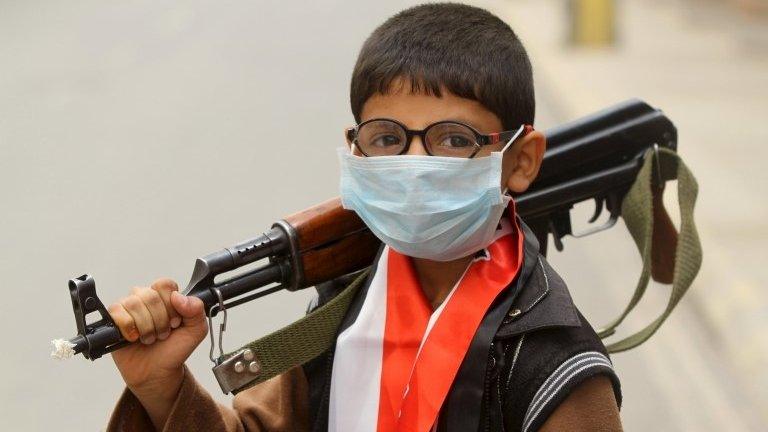Yemen conflict: How bad is the humanitarian crisis?
- Published
Two years of conflict have devastated Yemen, left 18 million people in need of some kind of humanitarian assistance and created the largest food security emergency in the world.
The country is experiencing a 'humanitarian catastrophe'
That was the frank assessment, external by a senior UN aid official back in August 2015, and one that was repeated by Emergency Relief Co-ordinator Stephen O'Brien in a statement to the UN Security Council in October 2016.
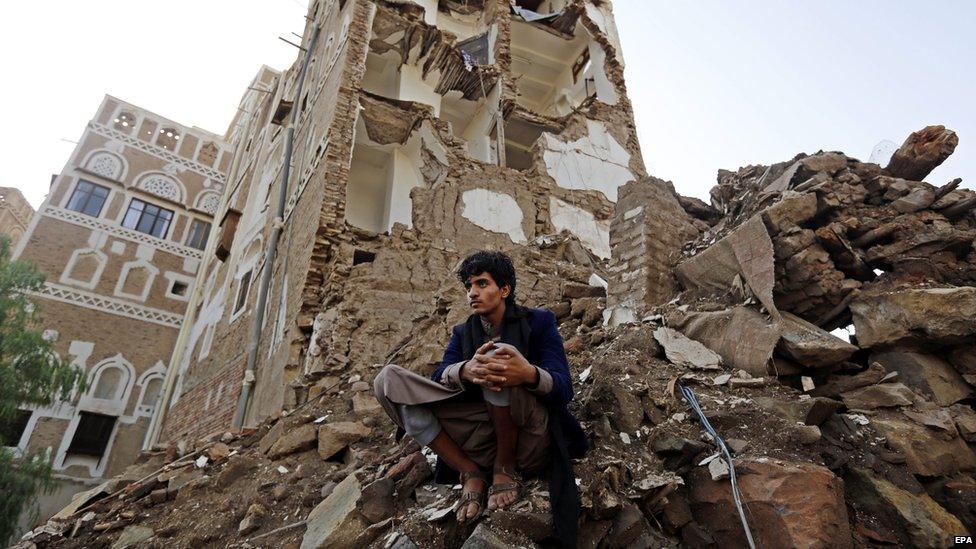
Saudi-led air strikes have destroyed parts of Sanaa's Old City, a Unesco World Heritage Site
The UN says, external more than 7,600 people - mostly civilians - have been killed and close to 42,000 others injured since the conflict between forces loyal to exiled President Abdrabbuh Mansour Hadi and those allied to the Houthi rebel movement escalated in March 2015.
Fighting on the ground and air strikes on rebel-held areas by a Saudi-led coalition backed by the US and UK have displaced more than three million people.
And seven million people do not know where their next meal might come from.
The World Food Programme's executive director, Ertharin Cousin, warned, external in March 2017 that aid workers faced a "race against time" to prevent a famine, adding: "We have about three months of food stored inside the country."

Yemen was already struggling
Yemen has been plagued by years of instability, poor governance, lack of rule of law, under-development, environmental decline and widespread poverty.
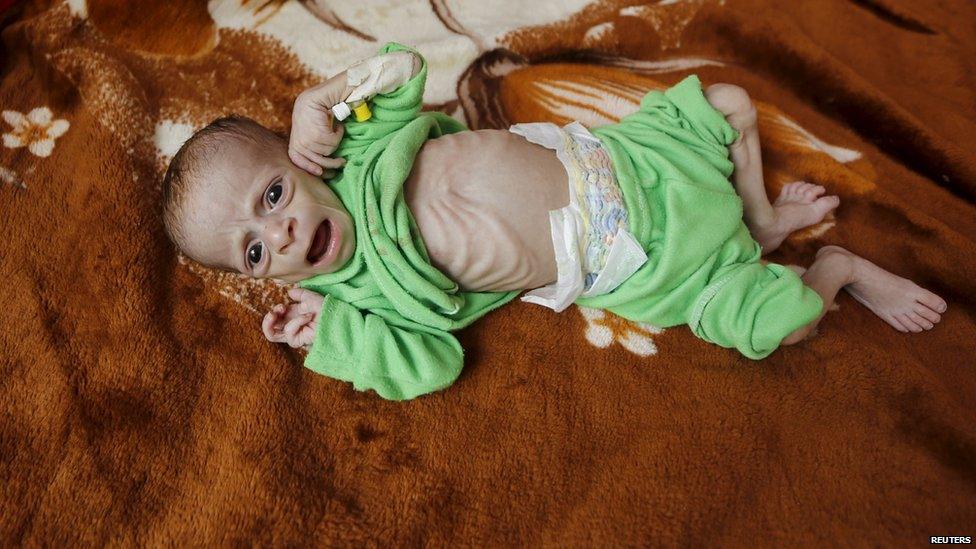
More than half-a-million children are severely malnourished in Yemen
Before 2015, almost half of all Yemenis lived below the poverty line, two-thirds of youths were unemployed, and social services were on the verge of collapse.
Almost 16 million people were in need of some form of humanitarian assistance.

Civilians are bearing the brunt of the violence
The UN recorded, external 13,045 civilian casualties, including 4,773 killed, between 26 March 2015, when the coalition air campaign began, and 26 March 2017.
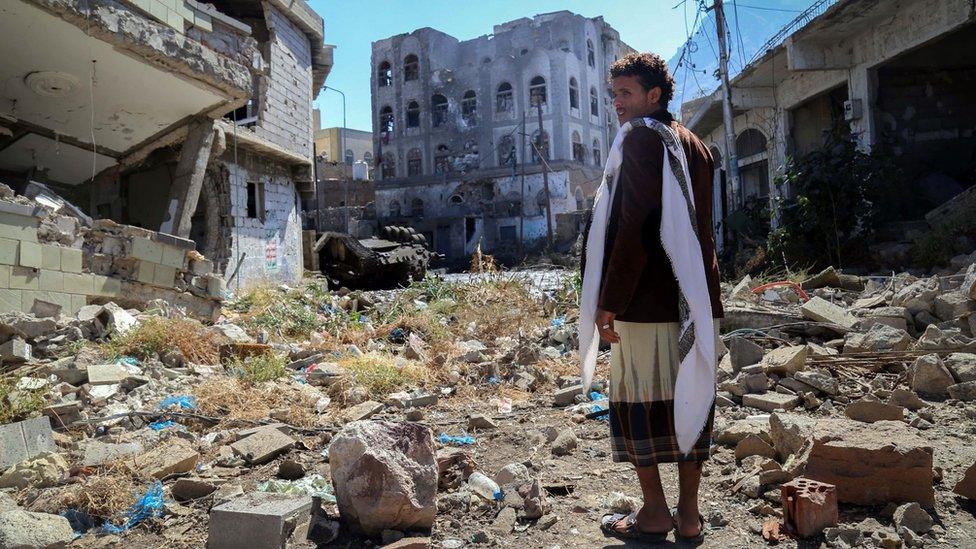
The third city of Taizz has been under siege by rebel forces for more than a year
Just under half of Yemen's population is under 18 and more than 1,200 children are among the dead.
A report, external by the Office of the UN High Commissioner for Human Rights, Zeid Raad Al Hussein, in August 2016 laid out a number of serious allegations of violations of international humanitarian law and human rights law committed by all sides.

They included attacks on residential areas and civilian infrastructure; the use of landmines and cluster bombs; sniper and drone attacks against civilians; detentions; targeted killings; the recruitment and use of children in hostilities; and forced evictions and displacement.

Two thirds of Yemenis need aid
As of March 2017, an estimated 18.8 million people - 69% of Yemen's population - needed some kind of humanitarian or protection assistance, according to the UN Office for the Co-ordination of Humanitarian Affairs, external (OCHA). That includes 10.3 million in acute need, who urgently require immediate, life-saving assistance in at least one sector.
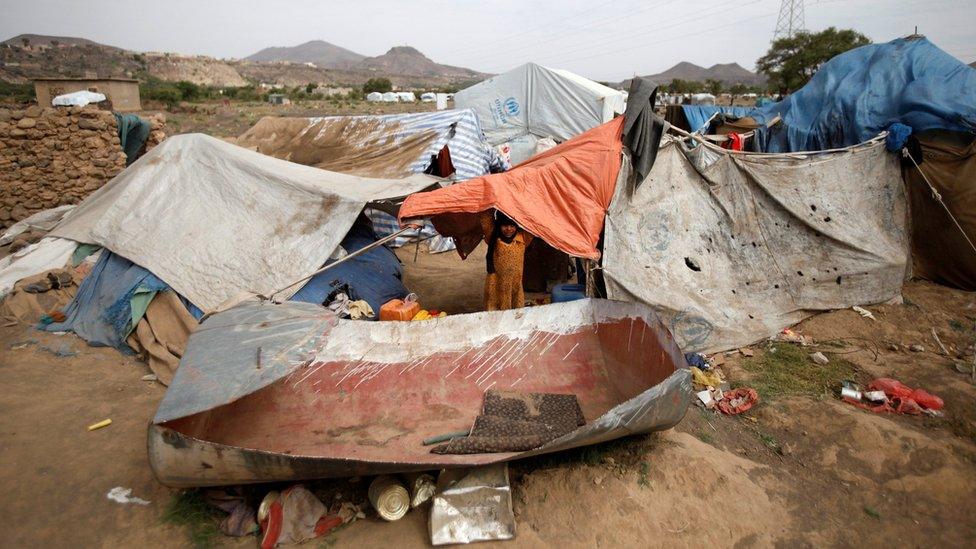
Some 3.3 million people have been displaced since March 2015. As of January 2017, more than 2 million remained displaced, external - more than six times the number recorded at the end of 2014 - and one million had returned to their homes. An additional 180,000 have fled the country, external.
The government says there are also between 1.7 and two million refugees, asylum seekers and migrants in Yemen, 460,000 of whom need humanitarian assistance.

An estimated 17 million people are considered, external food insecure and 6.8 million severely food insecure - 3 million more than in January 2017.
About 3.3 million children and pregnant or breast-feeding women are acutely malnourished, external, including 462,000 children under five who face severe acute malnutrition. That represents a 57% increase since late 2015 and threatens the lives and life-long prospects of those affected, according to the UN.
The World Food Programme has classified, external seven of Yemen's 22 provinces as being at "emergency" level - one step below famine on the five-point Integrated Food Security Phase Classification scale, external. Ten provinces are at "crisis" level.
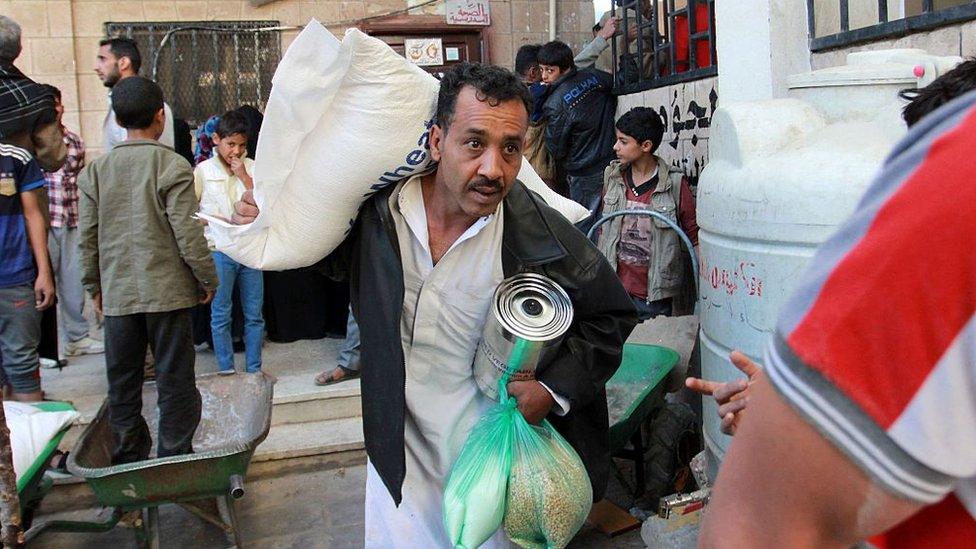
The conflict and import restrictions have made it difficult for millions to afford food
Yemen usually imports more than 90% of staple food. But a naval embargo imposed by the Saudi-led coalition, fighting around the government-controlled port of Aden and air strikes on the rebel-held port of Hudaydah, have severely reduced imports since 2015.
A lack of fuel, coupled with insecurity and damage to markets and roads, have also prevented supplies from being distributed.
Basic commodity prices are on average 30 to 50% higher than before the conflict, while purchasing power has been substantially reduced because of dwindling livelihoods.
The World Bank estimates, external that the poverty rate has doubled to 62%, with public sector salaries - on which about 30% of the population depend - paid only irregularly.
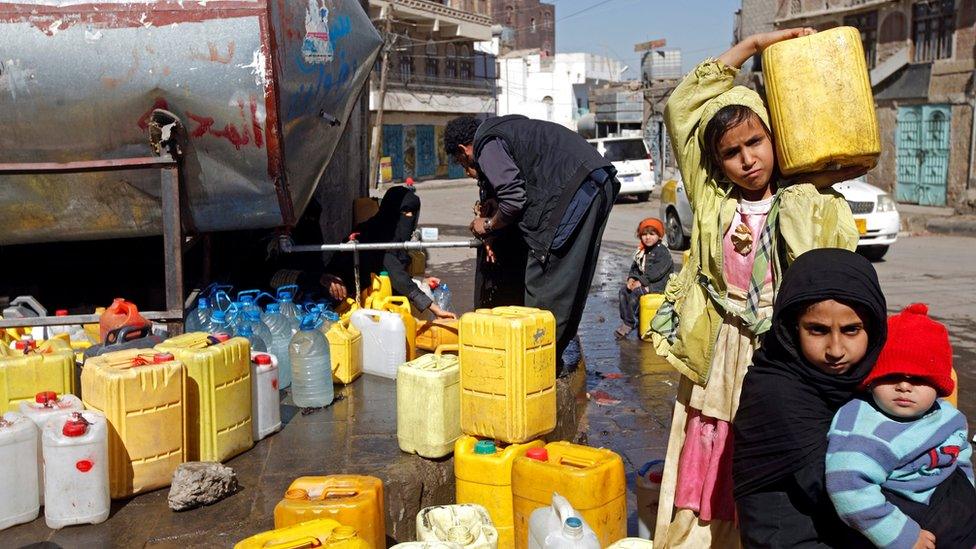
Millions lack access to safe drinking water or sanitation
The restrictions on imports of fuel - essential for maintaining the water supply - combined with damage to pumps and sewage treatment facilities, also mean that 14.4 million people now lack access to safe drinking water or sanitation, including 8.2 million who are in acute need.
People have been forced to rely on untreated water supplies and unprotected wells, placing them at risk of life-threatening illnesses. An outbreak of cholera and acute watery diarrhoea was declared in October. As of March 2017, a total of 22,181 suspected cases of cholera and 103 associated deaths had been reported, external.

Those affected by the outbreak, and the wider conflict, have struggled to get medical help. An estimated 14.8 million people lack access to basic healthcare, with 8.8 million living in severely affected areas. Only 45% of the 3,500 health facilities surveyed, external by the World Health Organization in November were fully functioning, and even they faced severe medicine, equipment and staff shortages.
As of October 2016, at least 274 health facilities had been damaged or destroyed in the conflict. Thirteen health workers have meanwhile been killed and 31 injured.
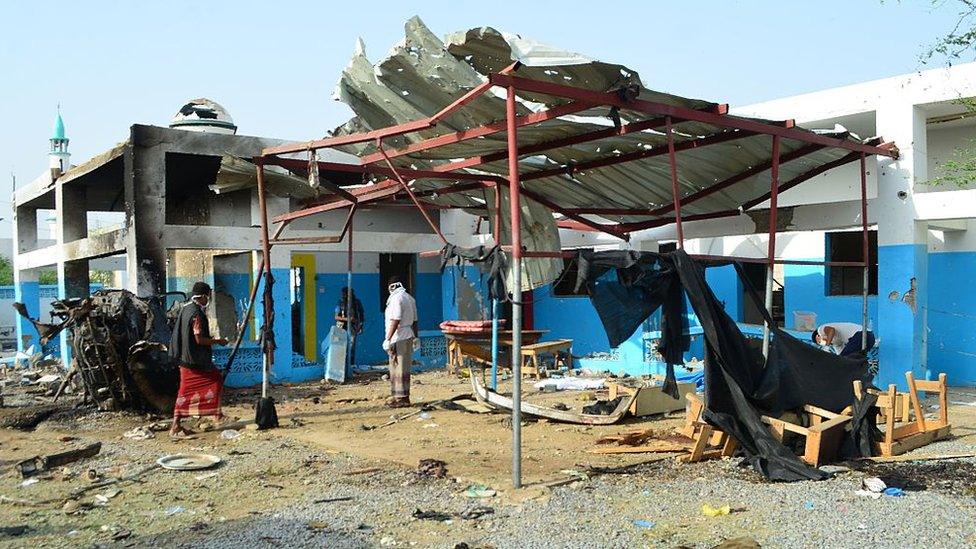
Medecins Sans Frontieres says the Abs hospital in Hajja was hit in an air strike in August
Treatments for chronically ill patients are increasingly unavailable due to import difficulties, rising prices or lack of health personnel. Mothers and young children are also at particular risk.
The conflict has also taken a toll on education. About 2 million children are out of school. More than 1,600 schools are currently unfit for use due to damage, presence of displaced people or occupation by combatants, and some two million children are out of school.

Aid organisations are struggling to help
More than 70 humanitarian organisations have been working to help those in need. However, access constraints, damaged infrastructure and unreliable access to fuel, together with a lack of funding, have hampered their efforts.
As of March 2017, the UN's appeal for $2.1bn (£1.7bn) to allow it to assist 12 million people in Yemen was only 7% funded, external.
- Published14 April 2023

- Published3 April 2015
